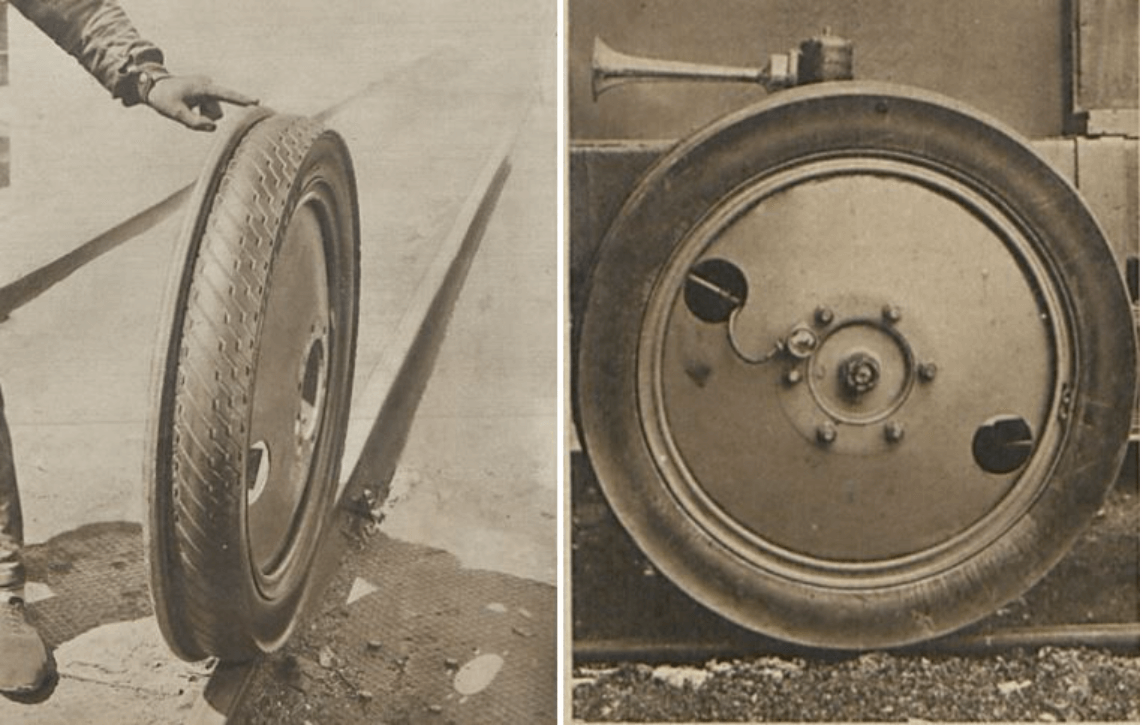90 years of the Micheline: 9 facts you may not know

In the 1930s, André Michelin, co-founder with his brother of the company Michelin & Cie, had a dream of improving the comfort of passenger trains. After much experimentation, he developed a special tyre capable of running on the reduced surface of a rail, crossing switches and withstanding the load of railway vehicles. The invention of the pneurail led to the first Micheline, a light and fast railcar developed by the Michelin company.
Although the term "micheline" has become part of everyday language in France, the real Micheline hides secrets that you probably don't know.
1. 50 shades of "Micheline"
There are more than 50 types of "Micheline". Although the first four prototypes did not leave the Michelin company's sheds, the fifth was presented to the railway companies with great fanfare in 1931. Covering the distance between Deauville and Paris Saint-Lazare at an average speed of 107 km/h with peaks of 130 km/h, its high speed ensured wide publicity for the process.
In 1932, the 24-seat "Micheline" called "type 11" was introduced on the railways, followed in 1936 by the type 16 with 36 seats.
The railcars continued to evolve and to accommodate more and more passengers. "Michelines", adapted for narrow gauge (Types 51 and 52), were also put into service in colonial networks in Africa, Vietnam and Madagascar.
2. A combination of a car and an aeroplane
Compared to steel wheels, the "pneurail" offers increased grip and comfort but at the cost of a limited axle load. To overcome this limitation, the Micheline was fitted with a large number of wheels, and borrowed techniques from aeronautics to lighten its weight. The Type 5 is made of Duralumin, an extremely light but very strong aluminium alloy, with a total empty weight of 4.2 tonnes.
3. Increased grip
Inflated to 5 kg/cm2 , the first tyres could support a load of 700 kg per wheel. The grip of this type of tyre was three times greater than the contact between a conventional wheel and the rail. To ensure this grip, a low-pressure warning device was placed on the driver's dashboard. In the event of a complete deflation of the tyre, a safety device prevented the wheel from sagging more than 8 mm.

(image from https://retronews.fr - revue science et monde July 30th 1931)
4. Impressive performance
The Micheline impresses with its technical performance far superior to that of a steam train:
- braking: stopping in less than 100 metres when the Micheline was travelling at 80 km/h compared to almost 10 times more for an ordinary train
- acceleration: the speed of 60 km/h was reached in 350 metres and 80 in 600 metres compared to 1500 metres for a steam train
- manoeuvrability: because of their stability and light weight, michelin trains could travel at high speeds on tracks whose condition forced other trains to slow down. For example, on the line from Saint Florent to Issoudun, where the speed limit was 60 km/h, michelin trains ran at 100 or even 120 km/h on certain sections.
5. A shortened career
Despite their performance, these railcars had a very short career. In France, the Type 5s were withdrawn from circulation at the start of hostilities in 1939, and converted after the war into trailers. The rail coaches were quickly replaced by larger, more rail-like michelin coaches. Type 23s continued to operate in France until 1952.
6. One-way direction, an unsolvable problem?
Type 11 railcars have a major disadvantage: a single direction of travel, which requires the vehicle to be turned around each time the direction is changed. To overcome this problem, these railcars are converted to reversible driving. The truck-like front cab is replaced on the Type 16 michelin by a raised cab. A reversing gear is also added to allow shifting in both directions.
7. Exponential growth
In less than a decade, "michelines" trains have grown almost exponentially. They have grown from about ten metres in length for the type 11 to over 45 metres in length for the type 33, an articulated train with three elements on four bogies. It accommodates 48 first-class and 60 second-class passengers. A driver's cab is located at each end.
8. There are still 2 michelines in circulation
Currently, two Type 51s remain in Madagascar, where a tourist "micheline" service is still in operation. A type 22 michelin with 56 seats is on display at the "Cité du train" in Mulhouse.
9. A model making success
Several "michelines" have been reproduced in HO scale (1:87) for model railroad enthusiasts:
- the type 5
- the type 11 (24 seats)
- the type 16 (36 seats)
- the type 20 (56 seats)
- the type 21/22 (also 56 seats)
- and the type 51 (suitable for narrow lanes)
Auteur
-
 Xavier FELTINCEO & Co-fondateur de Komugi
Xavier FELTINCEO & Co-fondateur de Komugi
